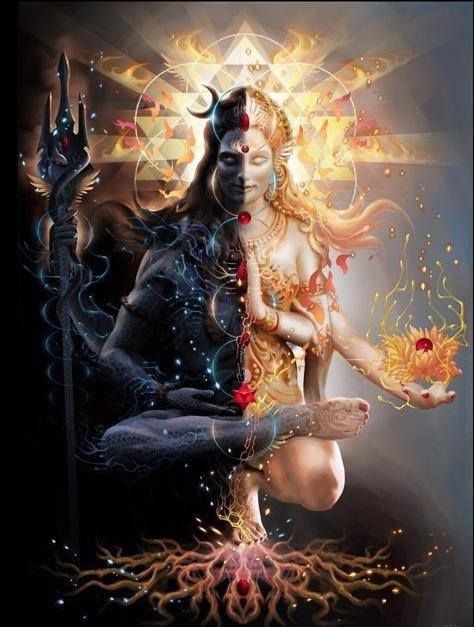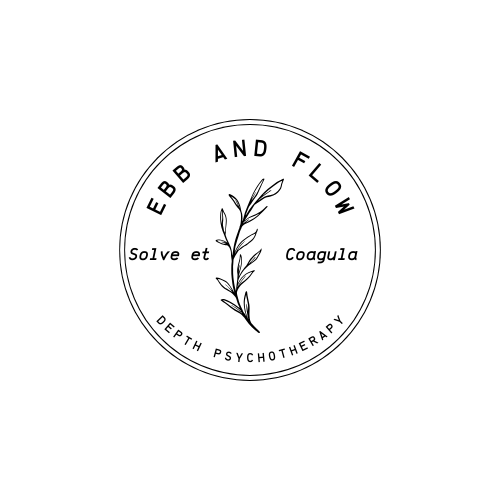Sacred Androgyny: Anima and Animus Integration in Jungian Psychology
Reconciling Our Masculine and Feminine Energies


Animus Integration in Women
The animus is a woman’s capacity for reasoning, logos, and entry into the world. Through her masculine essence, she is able to take the germ of an idea and seed it out into the world as a work of art, business, or other endeavor. The key here is that her contrasexual personality gives form to the depth of being embodied in her femininity, from pure relatedness and being to particularlity and discernment.
Animus Integration Case Study
A woman has a dream of becoming a writer. She has notebooks filled with ideas, conversations, and stories. None of these ideas ever reach fruition. They languish away in her notebooks, never meeting anyone’s eyes, never being flushed out as she becomes overwhelmed by the task.
Underneath this are harsh internal criticisms, a fear of organizing, and tainting her ideas with the imperfection of the writing process (something every creative must confront), and a self-limiting belief that she is unworthy of success.
This woman routinely dates men who are creatives or successful in their endeavors, and she idealizes them until she doesn’t, swinging a sword in times of conflict. She hopes for a savior and despises one, not knowing she is working towards her own mature interdependence.
"The animus is a woman’s capacity for reasoning, logos, and entry into the world."
She begins taking writing classes online or at her local community college, and most importantly, she starts setting time aside for the tasks that make her most uncomfortable, like taking one of her inspired ideas and flushing it out, creating material, providing something for the editing process.
She relinquishes fantasies of producing the perfect manuscript on inspiration alone, and develops a structure whereby she can write reliably but also allow for her feminine expression and versatility.
Animus Integration Reflection Questions:
- What creative aspirations do I have that never “get off the ground?”
- What critical voices and phrases diminish me and discourage me from pursuing what I find joyful and meaningful?
- To what degree do I depend on my partner(s) to provide structure and meaning in my life? In what ways is this healthy? In what ways is it not?
- What swords will I draw in conflict?
Now let’s see an example from the other side of the coin.
Anima Integration in Men
The anima is the man’s capacity for relatedness and eros, his ability to be sensual, soft, and intuitive. Through his feminine essence, a man ceases to be a machine, a locomotion for doing. He learns to accept and define his own seasonal rhythms, and is able to relate to Nature, the feminine, and himself in a whole different way. He sees himself not only as a means to an end, such as finanical independence or entrepreneurial success, but as a living creature with its own wants, needs, limitations, and whimsies!
Anima Integration Case Study
A man highly accomplished in business is unsatisfied. His portfolio is well-diversified, his retirement fund airtight, yet he has trouble getting on with himself. He feels bored, often looking forward to a bottle of wine or a bowl of cannabis.
Even during his time off, he has difficulty knowing what he would enjoy and defaults to passive leisure: TV, video games, porn, beer and weed for good measure. He struggles in his relationship with his wife whom he looks to to meet all of his needs for being, nurturing, and belonging.
His wife, after threatening divorce several times, contacts a lawyer and initiates the process. He sinks into a heavy depression. After languishing in drink and drugs for several days or weeks he knows he needs to make a change.
"The anima is the man’s capacity for relatedness and eros, his ability to be sensual, soft, and intuitive."
He turns to yoga, first for the lovely young ladies in their tight and revealing spandex outfits, but then for the peace he finds in his breath. He is encouraged by a depth psychotherapist to begin journaling in the morning and paying close attention to his feelings, particularly his less familiar feelings of sadness, longing, and real joy. He is also encouraged to begin walking in wild Nature, not as a way to exercise, but as a way to notice the living world around him and how he is connected with it.
Through his experiences, he learns that he is a fundamental part of Nature and that Nature is aware of him. He begins to have dreams and to see meaning in them. Through this process he comes to a greater understanding of his own needs as a human being both as an individual and in relatedness.
He apologizes to his wife, weaving a simple but potent ceremony where he asks for forgiveness for his pig-headedness, for indulging his feminine in the spirits of alcohol and marijuana, and finds more equitable relationship among them all. He can find joy in his own company, and routinely does things for their simple pleasure rather than trying to meet some demand or expectation.
Anima Integration Reflection Questions:
- What are my rituals of pacification, and which substances are involved? (ex: TV, beer, etc.)
- In what ways do I look to my partner(s) to be responsible for my emotional well-being? In what ways is this healthy? In what ways is it not?
- How do I weaponize my emotions during times of conflict?
- Where do I make time simply to be, not to “do” something, but to be and receive?
Integration of the Contrasexual Personality in Spirituality
These have been two simple examples of how our contrary nature, unrecognized, can wreak havoc upon our personal lives, our bodies, spirits, and beloveds. In the final part of the article, we will explore what this contrary side of our nature holds for our spiritual life, and the journey towards spiritual wholeness that Jung described as the integration of contrasexual archetypes.


